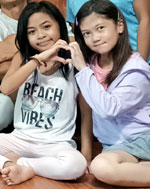
 June 11, 2024
June 11, 2024
First-Principles Thinking
What is First Principles?
As I read the book Elon Musk by Walter Isaacson, I came across the concept of First Principles. I looked it up. This is a way of solving problems by breaking down complex issues into their most basic, fundamental elements. Layers upon layers of assumptions built upon it are removed until it can no longer be reduced, or you hit the core of physics itself where you can no longer question the axioms. You can then build up from there.
Brain Rewiring
It's not that easy. I realized that simply knowing the definition doesn't translate to doing things using First Principles. You really need to wrap your mind around it until it becomes second nature...then you begin to think like Elon! The thinking is shifted from something borne out of habit or superficial into something more foundational.
Basic and most evident truth
Whatever the problem is, think about the basic and most evident truth about the problem. Use the truth to build a solution. This thinking is in contrast to solving the problem using past experience or using conventional approaches.

ChatGPT Exercises
Curious how to develop this kind of thinking, I asked ChatGPT if it could give me basic exercises to get me up to speed. Well, it didn't disappoint. Here are the exercises:
Example: SpaceX
Problem:
Before Elon, rockets were made with aluminum + copper + titanium. Space exploration used single-use rockets - this was the industry template and every rocket company complied with this. This made space exploration expensive, complicated and wasteful.
Fundamental truths about rockets:
- Cost of materials - what materials are used and how expensive are they? Turns out, the materials used, aluminum + copper + titanium, were not expensive. From a cost-perspective, there was no need to change the materials (but from an operational dynamics perspective, Stainless steel made more sense)
- Complexity of manufacturing - what is the manufacturing process? Turns out, designing, manufacturing and assembling rockets were expensive, time/labor-consuming and ate up valuable resources
e.g. the original Raptor rocket was so complicated that resembled a bundled-up spaghetti. The whole rocket was redesigned with fewer parts, streamlined form and more powerful - Operational dynamics - rockets go through high heat and pressure during launch and re-entry. Aluminum + copper + titanium, while inexpensive, have lower melting points and require a heat shields upon re-entry.
Solution: What other materials are viable for rocket use? Stainless steel has higher thermal limits and does not require heat shield. It is also stronger than aluminum, even though it is heavier. Strength-to-weight ratio of SS outweighed the lightness of aluminum. SS is cheaper and does not require complicated manufacturing equipment. Because SS is stronger, it provides increased structural integrity - Fuel requirement - rockets require a lot of fuel for take-off until they reach orbit. Fuel takes up a lot of space and they are heavy
e.g. by lightening the rocket and removing non-essential parts, less fuel was required for a lighter payload - Single-Use - rockets have always been single-use. Nobody ever questioned that. This made rockets expensive.
Solution: Research and experimenting were done to see if reusable rockets were viable. After a few failures, they finally came up with reusable rockets
- High costs are unavoidable because of the nature of rocket science and space travel
Challenge: Have all avenues been looked at to reduce cost without compromising safety and reliability? e.g. at Tesla, even the number of screws was reduced because they didn't need that much. Parts deemed unnecessary or redundant were deleted or simplified
Explore: look at other industries and see parallel manufacturing processes and costing. e.g. the Raptor rockets copied many manufacturing techniques from Tesla to reduce materials and processing costs by as much as 90%
Conceptualize how to build something from scratch using as little materials as possible and just add more if it proves inadequate. Don't look at existing models or templates.
Mapping the Ingredients:
In rocket manufacturing, you have materials, fuel, manufacturing, labor and operations. For materials, break it down into components to raw materials and find out where you can cut costs down.
∴ Elon made rockets made with stainless steel that were reusable. This was a radical departure from NASA's age-old way of building rockets. Now, SpaceX carries the most payload into orbit and launches more rockets than all the rocket companies combined.
Ending Thoughts
Once you have rewired your brain into thinking First Principles when faced with a problem, it becomes automatic. You cannot unsee the process once you develop the habit.
--- Gigit (TheLoneRider)
YOGA by Gigit ![]() |
Learn English
|
Learn English ![]() |
Travel like a Nomad
|
Travel like a Nomad ![]() |
Donation Bank
|
Donation Bank ![]()
Leave a comment?
Next story:

![]()

![]()
Learning Cebuano: July
(July 1-31, 2024) My last Cebuano lesson was still in October, 9 months ago in Siquijor. I'd been living now in Tagbilaran, still the Visayas, since March. This is another vain attempt to learn Bisaya...more »»
»» back to Learning
»» back to Homepage
ARCHIVE 2025:
JAN
1970 |
1973 |
1975 |
1976 |
1979 |
1981 |
1996 |
2000 |
2001 |
2002 |
2003 |
2004 |
2005 |
2006 |
2007 |
2008 |
2009 |
2010 |
2011 |
2012 |
2013 |
2014 |
2015 |
2016 |
2017 |
2018 |
2019 |
2020 |
2021 |
2022 |
2023 |
2024 |
2025 |
ALL BLOGS





